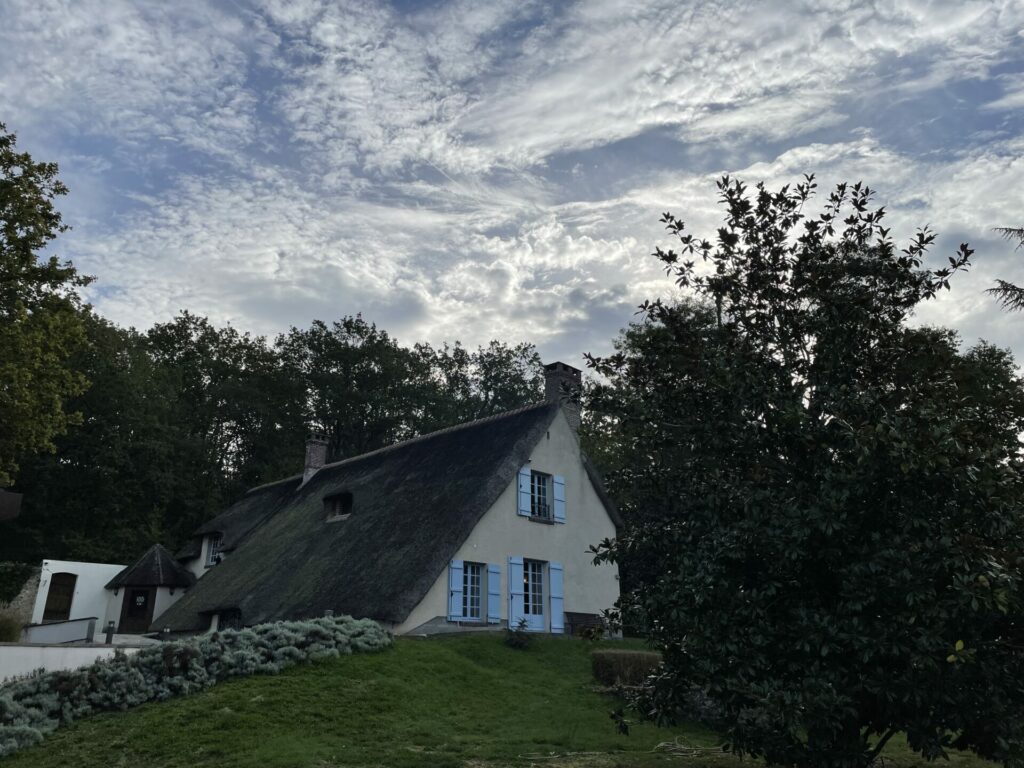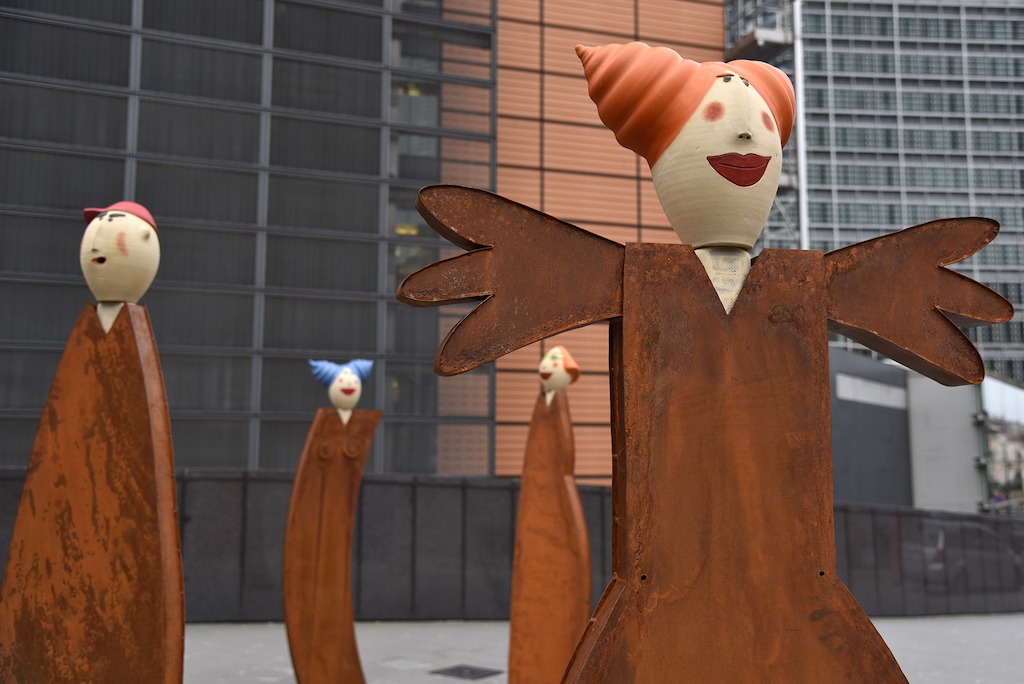Few non-politicians have had as great an impact on the course of history as Jean Monnet. How did he manage that? By concocting and helping to build clever institutions.
Philosopher Philippe Van Parijs reflects on current debates in Brussels, Belgium and Europe
A nation has its national flag, its national anthem, its national holiday, its national language and its statues of national heroes, preferably represented sitting on a horse with a sword on their side. By its very nature, the European Union could not have such heroes, but it has its saints: Schuman and Spaak, Spinelli and Veil and, topping them all, someone who did not finish secondary school, never held political office and spent many years selling liqueur from his native Cognac: Jean Monnet (1888-1979).
There is even a Jean Monnet sanctuary: a modest house with a huge garden in Bazoches-sur-Guyonne, about 40 km to the west of Paris. It is the house in which Monnet lived on and off from 1946 until his death in 1979, with Silvia de Bondini, the Italian woman he married in Moscow in 1934. It is the house in which he concocted, in early May 1950, the eight successive versions of what became the inaugural document of the European institutions: Robert Schuman’s declaration of 9 May 1950.
It is also the house in which he wrote, or rather dictated, after he finally retired at the age of 85, what may well be the most illuminating book about the European integration process. What his Mémoires show, better than anything else I have read, is how both individuals and institutions matter to the course of history.
Monnet meets Adenauer
To illustrate the key role of individuals and of the trust between them, no passage stuck more firmly in my mind than the one in which Monnet narrates his first encounter with the German Chancellor Konrad Adenauer in Bonn, on 23 May 1949. This was a mere four years after the end of a disastrous war that had killed millions and spread hate against Germany all over Europe. The best way to move forward, according to Monnet, was not to call for vengeance and demand massive reparations as was done after World War I. It was rather to try something unprecedented: close cooperation and interdependence as equals, starting with coal and steel. France’s foreign minister allowed Monnet to make this offer, and Adenauer accepted.
The success of this conversation between two individuals who spoke different languages and had never met before, their subsequent loyalty to one another and perseverance in overcoming and helping one another overcome hostility and distrust on their respective sides were key to making what followed possible: the Schuman declaration one year later, the Coal and Steel Community, with Monnet as chairman of its High Authority, the European Economic Community, the European Union. No wonder that Adenauer’s portrait and a photo of Monnet meeting him feature prominently in Monnet’s study in Bazoches.

Jean Monnet’s study, Bazoches-sur-Guyonne. Credit: Philippe Van Parijs
European Communities versus Council of Europe
The Mémoires illustrate just as lucidly the crucial importance of cleverly designed institutions. After the disaster of World War II, the Council of Europe, founded in 1949 and based in Strasbourg, was the first institution created in the hope of preventing its repetition. This hope hinged on the member states’ public commitment to defending important values and protecting fundamental rights. Reading the book Sauver l’Europe (1996) by Paul M.G. Levy, one of the Council’s first hauts fonctionnaires, makes one realize how those involved in this high road strategy looked down upon the more pedestrian approach that got off the ground by focusing on the markets for coal and steel.
Yet, Jean Monnet, who had learned from his disappointing experience as adjunct secretary general of the League of Nations three decades earlier, believed that the latter strategy held far more promise. And it is the institutions that grew out of the European Coal and Steel Community — the European Economic Community and later the European Union — that were regarded as deserving of the Nobel Peace Prize because they managed to make war unthinkable between its member states. By contrast, the fact that both Russia and Ukraine were members of the Council of Europe did not prevent Russia from invading Ukraine.
Cobden’s recipe and Monnet’s method
What is it that did the trick? No doubt in part Cobden’s recipe. A street in Monnet’s native town of Cognac is named after Richard Cobden, a Monnet-like 19th century English industrialist who exerted considerable political influence without wielding political power. He was a leader of the Anti-Corn-Law League that fought British protectionism and co-author of the first free-trade treaty (the 1865 Cobden-Chevalier treaty between England and France) and at the same time one of the initiators of the first International Peace Congresses.
Cobden regarded free trade and peace as closely connected. So did Monnet, and so did European Union President Herman Van Rompuy. In his Nobel speech, he called the interdependence created by the ever deeper and wider sharing of a market the European Union’s “secret weapon” in the service of peace.
However, subtle institutional engineering goes far beyond pacification through the promotion of international trade. What became known as “the Monnet method” is contained in a famous sentence of the 1950 Schuman Declaration: “Europe will not be made all at once, or according to a single plan. It will be built through concrete achievements which first create a de facto solidarity.” This “solidarité de fait” means nothing more than interdependence.
This interdependence, if it is of commercial nature, has the virtue of making armed conflict more costly, and therefore less likely, though not impossible. But whether commercial or not, significant interdependence also has other effects, such as the need to create new institutions in order to tame this interdependence, minimize its negative effects and expand its positive ones.

Jean Monnet’s house, Bazoches-sur-Guyonne. Credit: Philippe Van Parijs
The Parliament in Bazoches
One of these institutions came into existence the year Monnet died: a directly elected Parliament. Its day-to-day operation triggers countless transnational conversations, deliberations, coalitions and friendships not only among its members and their teams but also in the pan-European civil society that gravitates around it. This provides a welcome supplement to the Cobden recipe for immunizing the European Union against intra-Union war. But it does far more in the service of a more efficient, more secure and fairer Europe. Never as much as it could and should do but so much more than would be done without it.
In 1982, three years after Monnet’s death, the European Parliament bought his house in Bazoches. It now uses it, together with the newly built adjacent hostel, to host workshops and team-building sessions. A fitting way for an institution to venerate and commemorate an individual who spent his life concocting and building institutions. An appropriate use for the house that hosted the writing of a book that stressed more convincingly than any other the importance of both individuals and institutions.

